For the second time in four years, Flamengo have conquered the glorious Copa Libertadores. In one of the club’s most successful eras, the Rubro-Negro have once again confirmed their dominance by winning the continental title just a week and a half after lifting the Copa do Brasil trophy. Flamengo’s start to the season was far from ideal under Juventus-linked manager Paulo Sousa, but after Dorival Júnior’s arrival, the Rio de Janeiro side have climbed back to the top of South American football.
The final was far from easy, though. With former Chelsea manager Luiz Felipe Scolari, also known as Felipão, in charge, Athletico Paranaense put up a good fight until the very end. With a relatively inferior side, quality-wise, the Furacão assembled a strong defensive system to stop Flamengo’s star-studded attack. While Pedro Henrique’s red card in the 43rd minute made things easier, Mengão were already starting to break through in the first half.
With Premier League-linked Gabriel Barbosa and Everton Ribeiro being the standout stars, Flamengo were able to confirm their superiority and win the Copa Libertadores for the third time in the club’s prestigious history.
This tactical analysis will provide a detailed insight into the tactics behind the Copa Libertadores final in Guayaquil, Ecuador. More specifically, this analysis will also look at Athletico Paranaense‘s defensive plan to neutralise Flamengo’s quality, how Flamengo were able to break through, and finally how they were able to control a 10-men Athletico in the second half.
Lineups
Before examining the tactics that dictated the final, it is worth looking at how both teams lined up for this match. Both managers have been rather consistent this season, with their starting eleven as well as their formations. Flamengo’s eleven was far from a surprise, with Dorival deploying the same players that won the Copa do Brasil earlier this month. On the other hand, there was much surprise as Felipão lined up with a rather attacking team. Given Flamengo’s superiority, many were expecting a much more defensive side.
Flamengo came into the final with their usual 4-3-1-2, a narrow structure that searches for numerical and socio-affective superiority. The backline was composed of Rodinei, David Luiz, Léo Pereira, and Filipe Luís. In the midfield, Thiago Maia was flanked by Everton Ribeiro and João Gomes. Giorgian de Arrascaeta is the mastermind and orchestrator of Dorival’s side with Gabriel Barbosa and Pedro ahead of him.
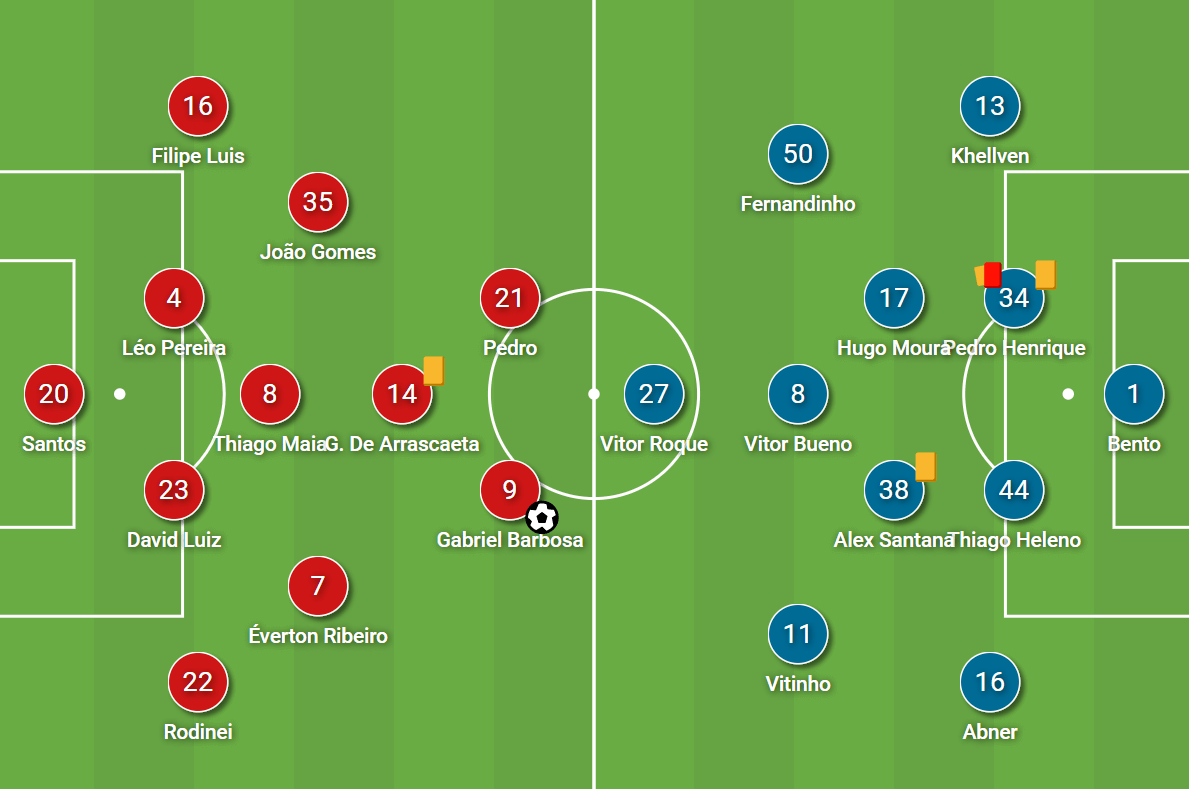
For Athletico, Felipão deployed an asymmetric and narrow 4-2-3-1. The backline consisted of Khellven, Pedro Henrique, Thiago Heleno, and Abner. Alex Santana and Hugo Moura were the two midfielders with Vitor Bueno ahead of them. Although on paper Fernandinho was a wide midfielder, he drifted in to play alongside the central players. On the other side, Vitinho is a more natural wide player. Finally, 17-year-old sensation Vitor Roque was the centre-forward.
Felipão’s man-marking system
As expected, Flamengo had much more of the ball. Dorival’s men had a dominating 68.43% of possession, with a total of 553 passes in the match. Prepared for this, Felipão set Athletico up with a solid defensive system. Flamengo’s tactics are based on mobility and positional fluidity, with their talented players constantly looking to cause damage through individual brilliance and social interactions. Looking to nullify this threat, Felipão created a tireless man-marking defensive strategy with pre-assigned and non-negotiable roles.
As they looked to maintain this organisation without the ball, they adopted a much more passive behaviour out of possession. Across the 90 minutes, Athletico averaged a PPDA of 13.84, much higher than Flamengo’s 4.9.
Flamengo were structured with a high number of players in the middle of the park. With players like Everton Ribeiro and De Arrascaeta posing a very alarming threat, Athletico looked to limit their involvement.
As mentioned, Felipão’s men had predetermined marking roles. Vitor Bueno was in charge of Thiago Maia, Fernandinho marked João Gomes, and Santana had the difficult task of stopping Everton Ribeiro. Finally, Hugo Moura sat deeper as he followed Arrascaeta around. Gabigol started on the right side, so Abner was in charge of staying with the very mobile forward. Vitinho was instructed to track back and stay on Rodinei, who constantly looked to join the attack. Finally, Khellven, Athletico’s right-back, was on Filipe Luís. In the image below, despite movement from Flamengo’s players, the matchups are clearly defined.
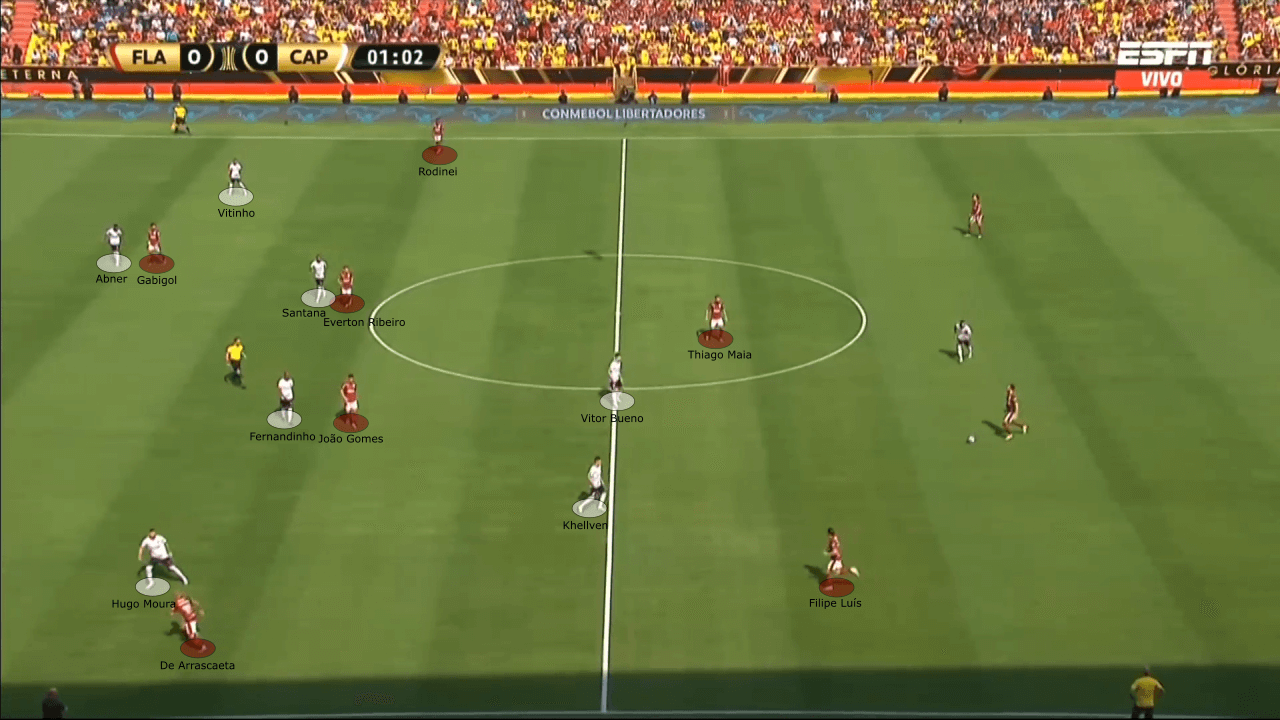
Only a minute later, we are able to see a more significant example of how strict this man-marking system was. As Gabigol drops extremely deep on the opposite side of the midfield, Abner, the left-back, follows him all the way up there. It is very clear Athletico’s defensive system had little regard for maintaining structure and compactness, but rather nullifying the individual threat.
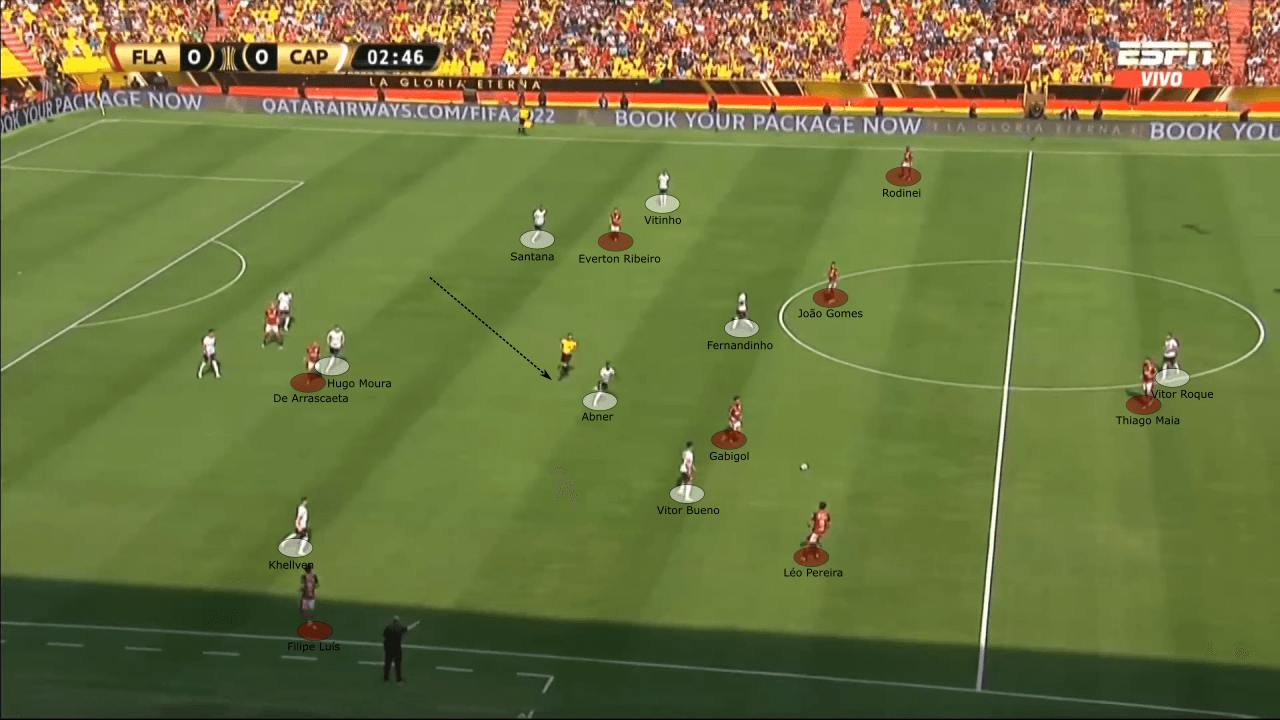
In addition to limiting the time and space Flamengo’s players had on the ball, this defensive strategy also aimed to create numerical superiority in the deeper areas and limit Flamengo’s threat. With Pedro lacking a certain positional mobility, Athletico left both centre-backs on him. Rather than assigning one centre-back to each centre-forward, Felipão put the left-back on Gabi in order to maintain superiority in the back.
Having this superiority in the back means Athletico’s players are always provided with a defensive cover. This plus one allows them to recover from individual mistakes and track free runners.
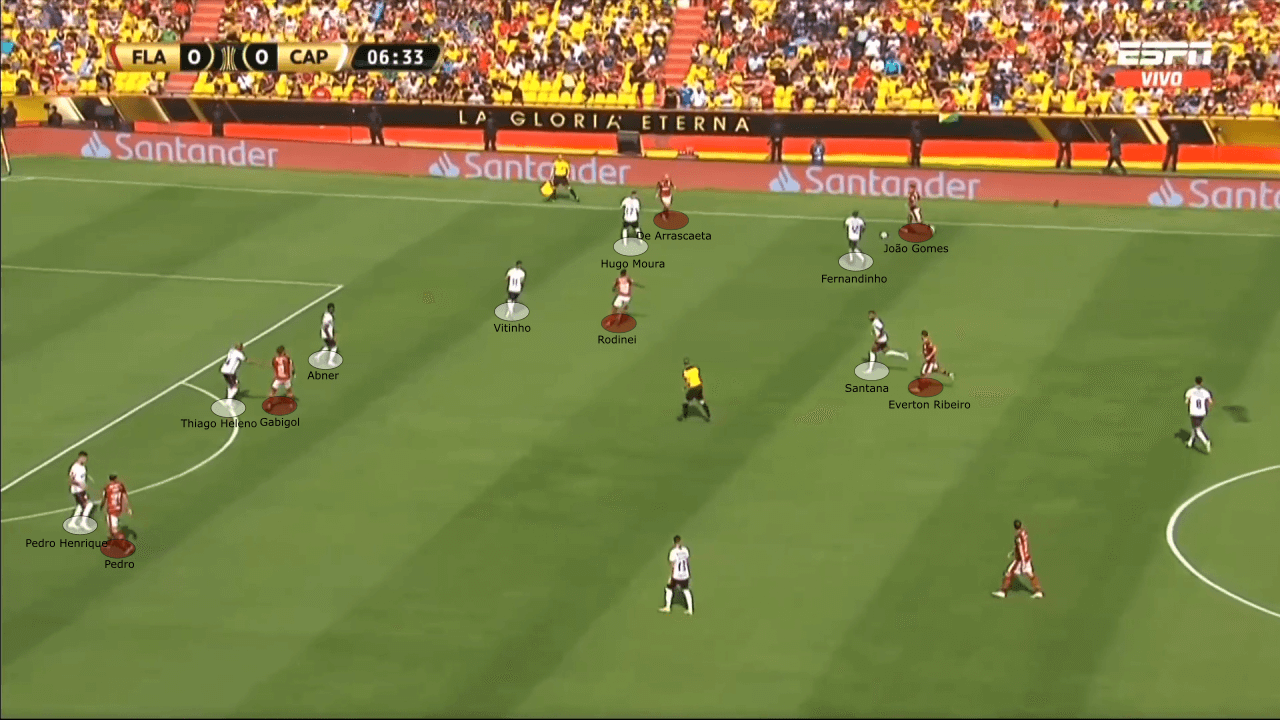
Flamengo breaking through
As the match went on, Flamengo started to break through Athletico’s defensive system and create danger. Although the red card made this much easier in the second half, as we will examine later, Mengão started to find success much earlier. Furacão’s defensive strategy, while appropriate, was extremely demanding, especially mentally. This man-marking system is rather risky as one slip-up may result in serious damage. For the most part, Felipão’s men were extremely switched on and hard-working, and regardless of the final score, credit must be given to them for fighting until the very end.
However, in a few instances, there was a slight slip in attention which allowed Flamengo to progress with danger. As Flamengo looked for ways to progress around Athletico’s marking, they found success through intelligent positional rotations. For instance, as seen below, Everton Ribeiro drops deep to create a distraction while Thiago Maia makes a run between the lines. Vitor Bueno, his marker, takes a few seconds to realise this, and Maia is able to receive it with a lot of space to attack.
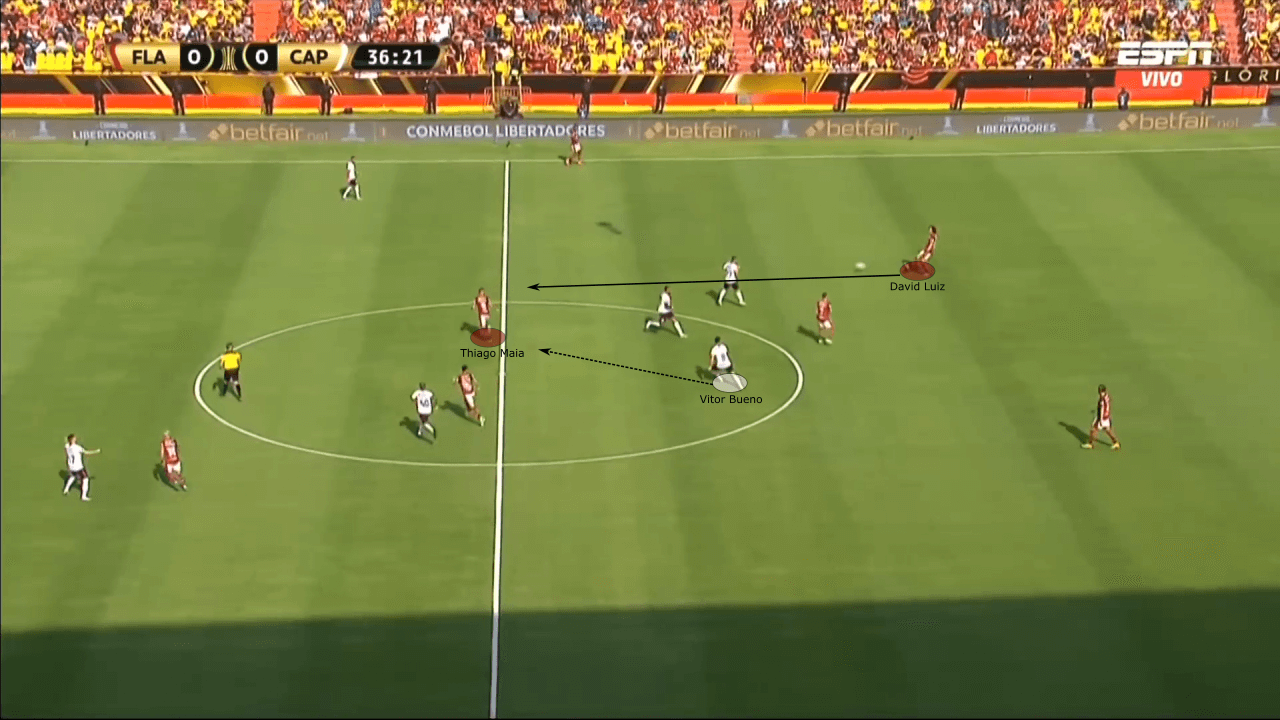
In other instances, Ribeiro dropped much deeper to get on the ball and begin Mengão’s positional attacks. By dropping from a much more advanced initial position, Santana often struggled to keep up with him. In the example below, Everton Ribeiro has a lot of time and space as he looks to pick out a dangerous pass.
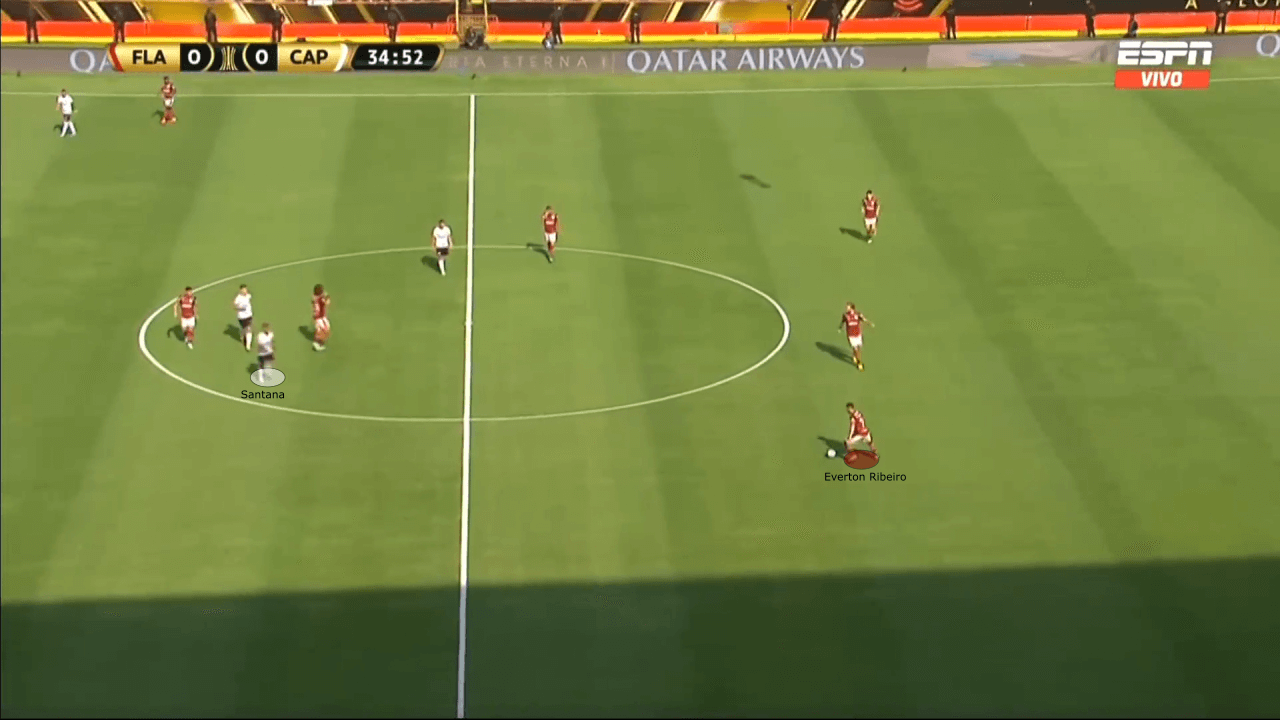
With such time, he is able to find Gabi making a run behind Khellven. Gabriel Barbosa is a tactically fascinating player, with his mobility and positioning often responsible for creating key spaces. Despite beginning on the right side of the attack, as the match went on, he begin drifting to the opposite wing. This was a direct result of the introduction of Ayrton Lucas, who replaced the injured Filipe Luís in the 20th minute.
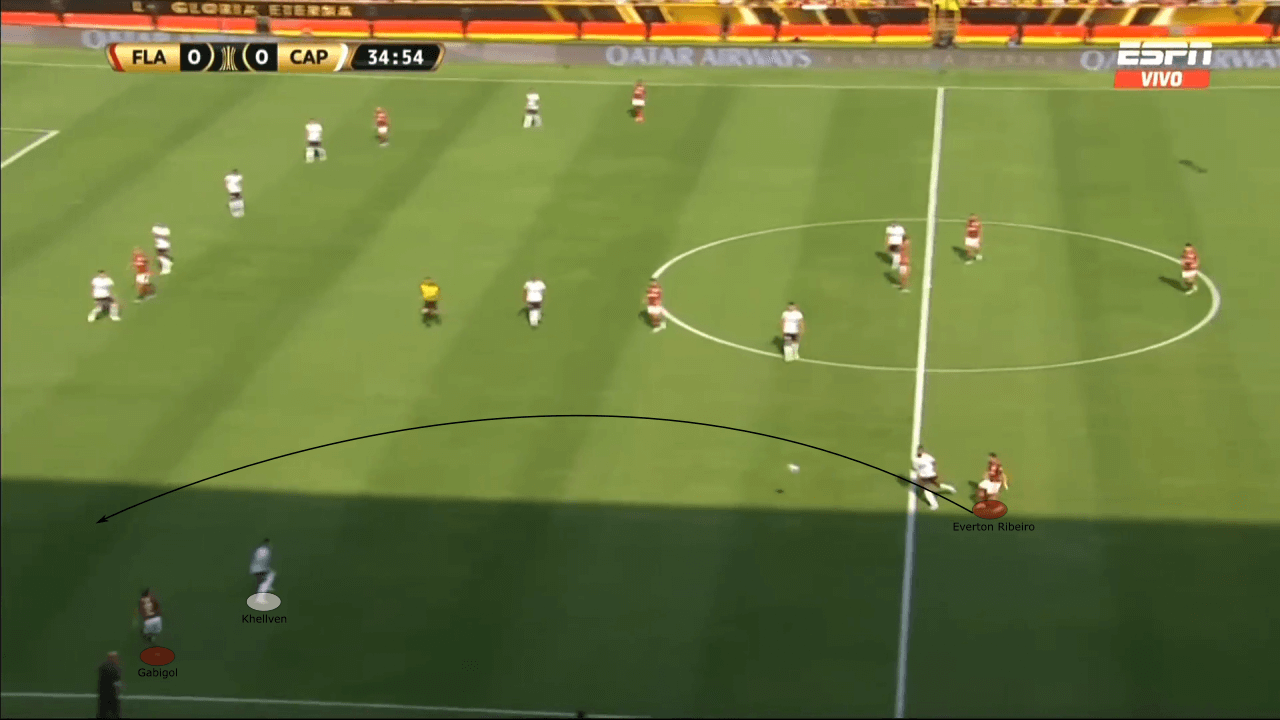
Although forced by an unfortunate injury, in hindsight, Ayrton Lucas’ introduction proved extremely important. The 25-year-old is a much more attacking and mobile player than Filipe, and with such movement, he was able to create the edge Flamengo were looking for. Often dashing into the final third, Lucas was able to create danger through both underlaps and overlaps. In the example below, as Arrascaeta drags Hugo Moura out wide, Ayrton Lucas makes an underlapping run into the free space in the midfield.
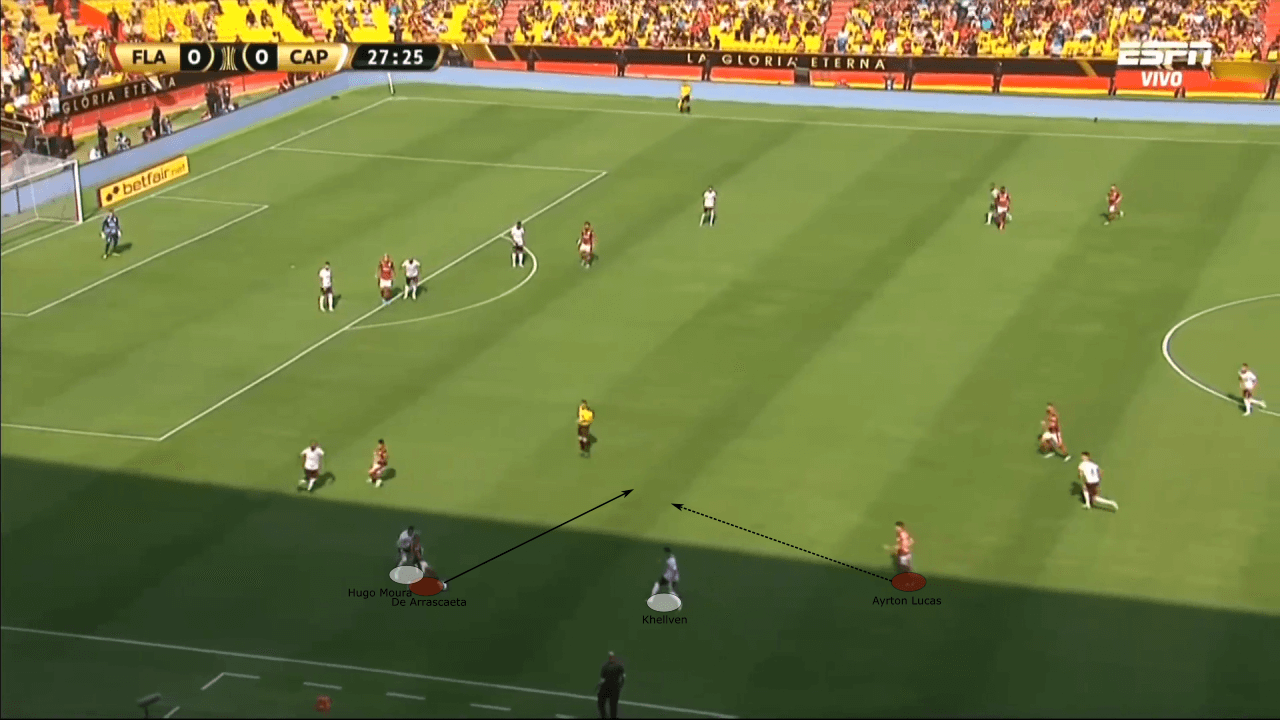
Additionally, Khellven’s instruction to mark Ayrton Lucas was a key factor behind Mengo’s success. Considering Khellven’s tight man-marking behaviour, Flamengo were able to manipulate him and create space in Athletico’s half. In this first instance, Ayrton Lucas sits much deeper to attract Khellven and create space behind him for Pedro to drift into.
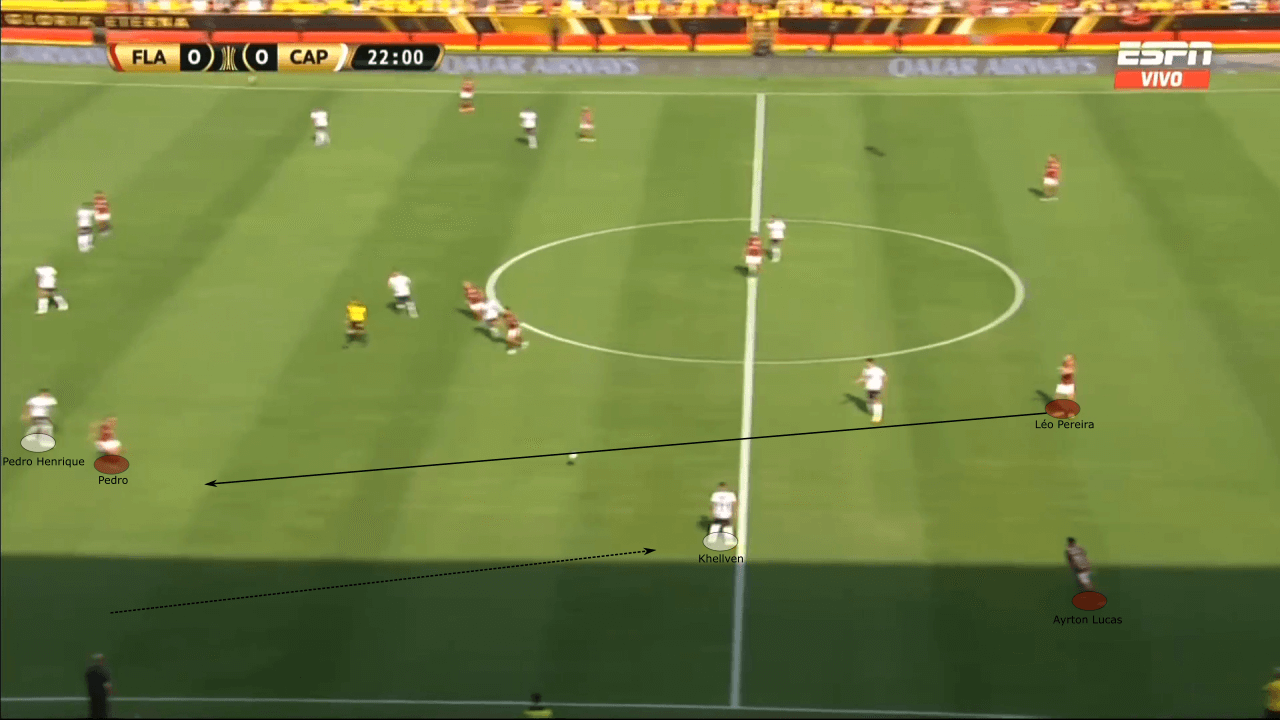
In this second instance, a similar strategy is used. Gabigol performs the Facão movement, which is when a centre-forward makes a curved run by dropping and attacking the opposite side. With Khellven pushing up, Léo Pereira is once again able to play it behind him.
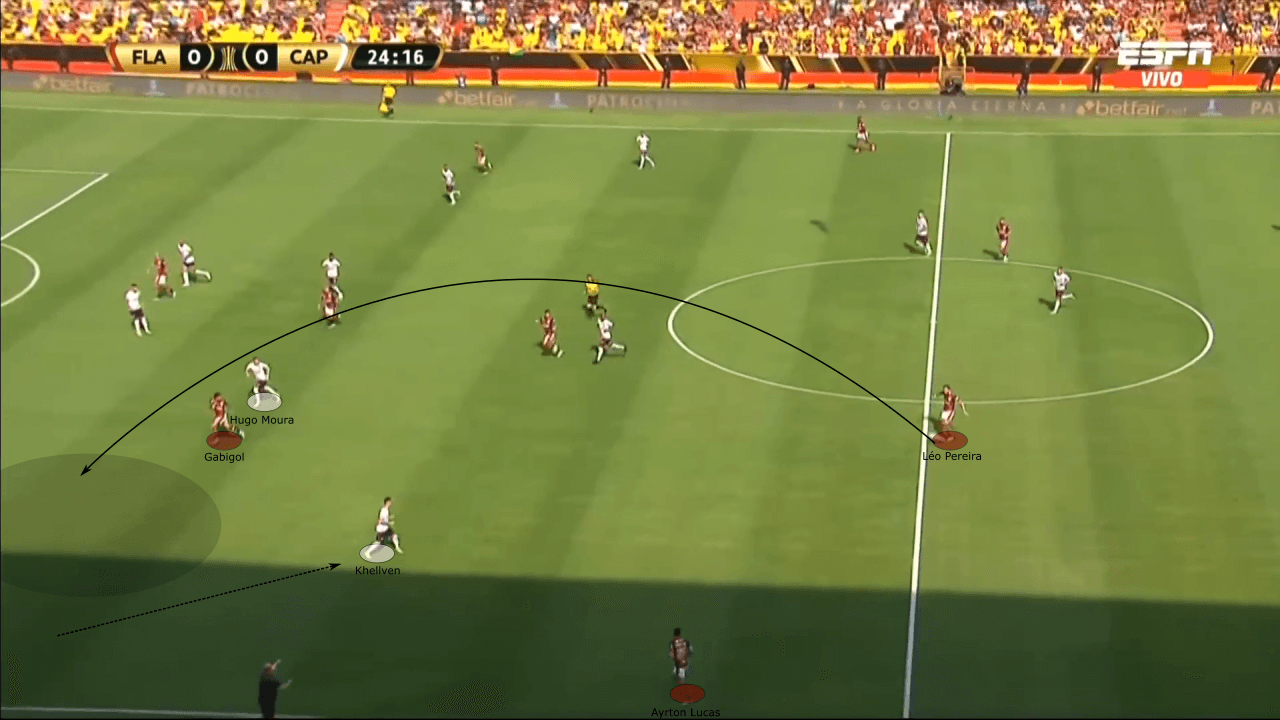
A similar Facão movement was responsible for the deciding goal in this final. As Flamengo begin to develop an attack on the right wing, Gabi begins drifting from the right side, where Abner is marking him, to the opposite end of the backline.
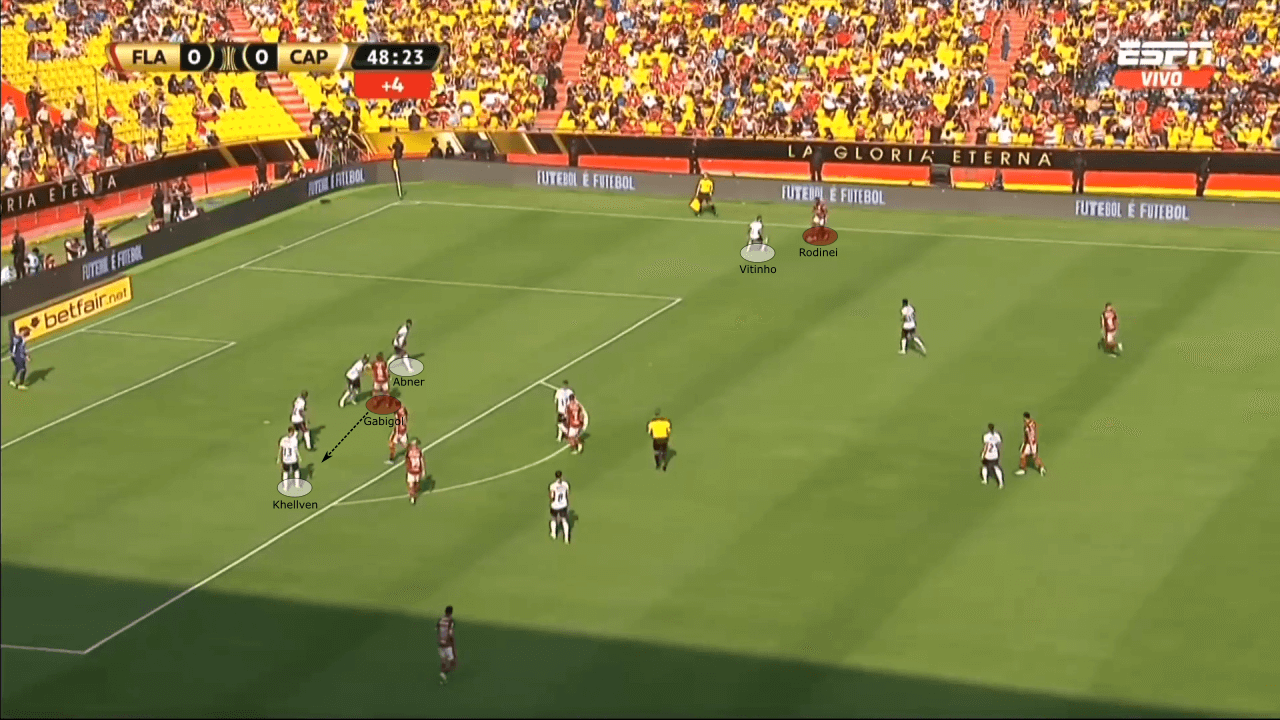
With a lapse in attention and communication, Athletico’s backline fails to pick Gabriel up. Everton Ribeiro is able to pick out an excellent cross to find him running free in the back post.
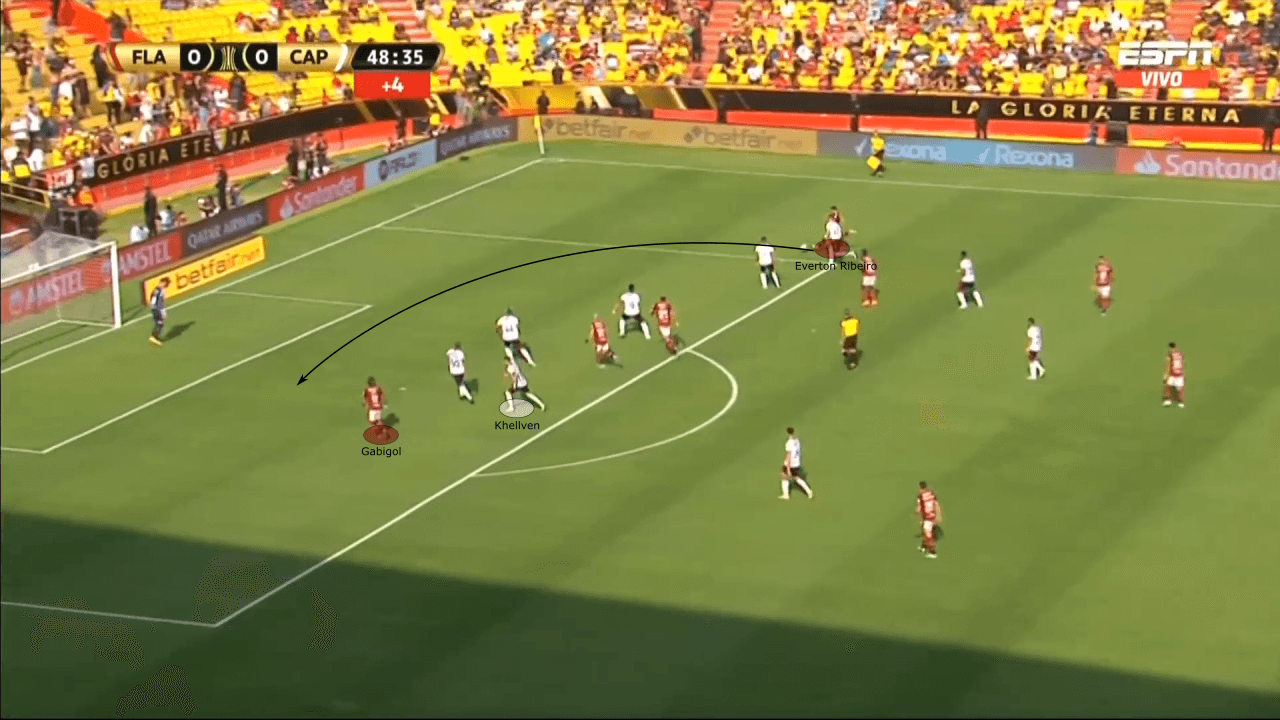
Flamengo’s control
In the second half, against a 10-men Athletico, Flamengo were able to ensure absolute control and see the game out. Their domination became much more significant and in the second half, Furacão only had 30% possession. The possession map below illustrates Flamengo’s domination throughout the match. Although much more superior, towards the end of the first half, Athletico were able to somewhat get forward. However, in the second half, Flamengo’s possession figure only grew higher.
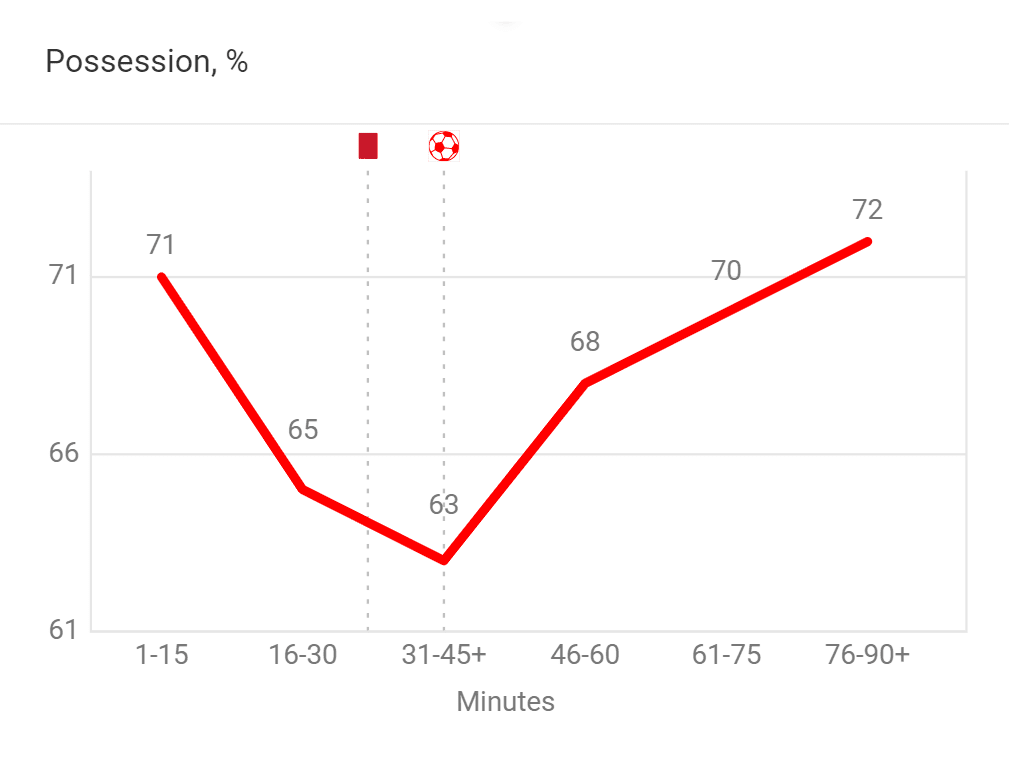
Dorival’s side were able to dominate the second half by winning the midfield battle. Felipão still wanted to maintain a plus-one superiority in the backline, and with Vitor Roque staying up as an outlet, Flamengo were able to have an extra man in the middle of the park. In the example below, we are able to see how Flamengo created a 3v2 in the central channels and retained possession.
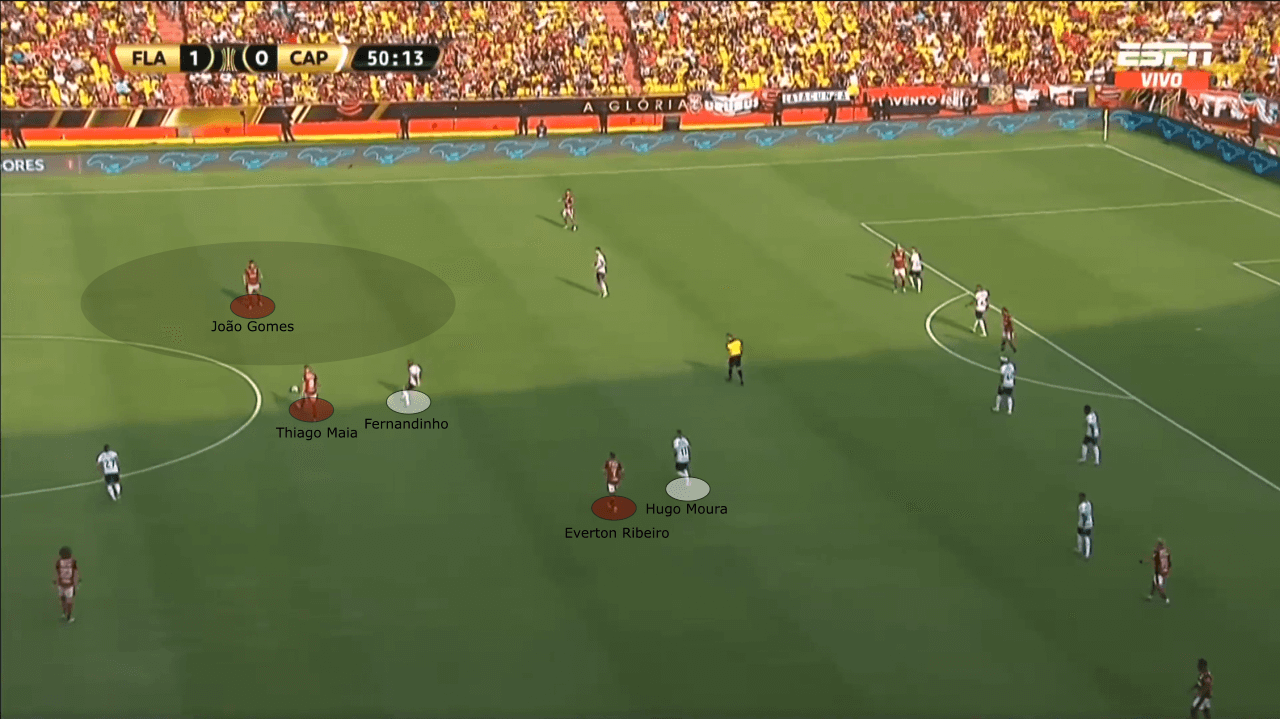
This superiority unsurprisingly led to dangerous chances being created. With intelligent movement, Flamengo were often able to find vertical passes in between Athletico’s midfielders. With two quick vertical passes, as seen below, Mengo put Gabi in a 1v1 situation against Bento.
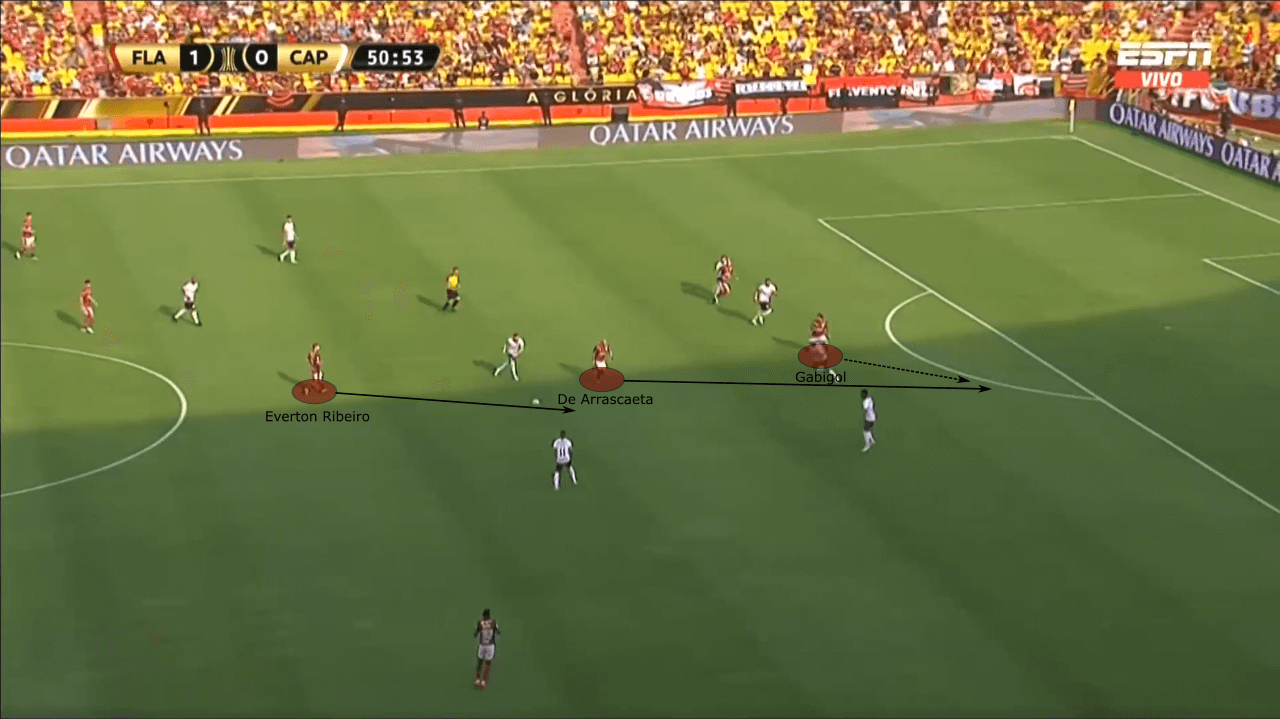
This movement between defensive lines is further illustrated in the image below. Being a man down, Athletico struggled to keep up with Flamengo’s movement and limit the space in their own third. In the image below, there is a clear gap between the lines that Everton, Arrasca, and Gomes are able to attack.
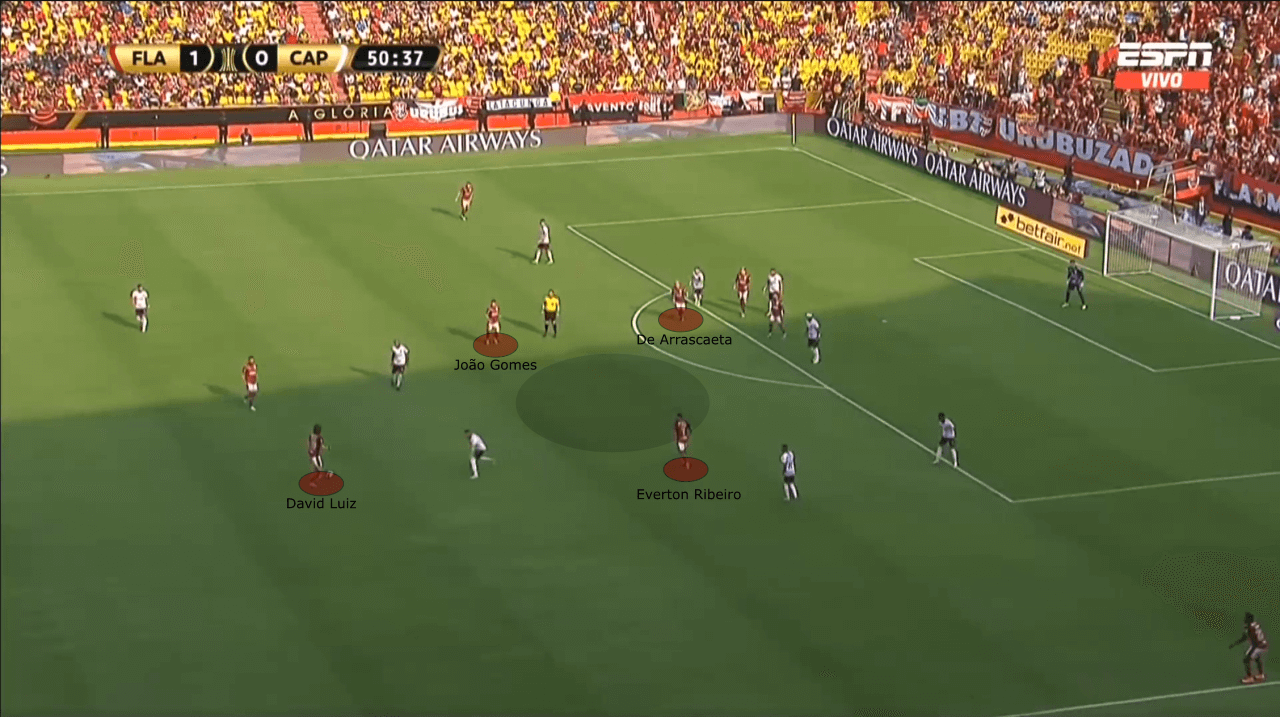
Conclusion
Although Athletico Paranaense put up a good fight, Flamengo were able to confirm their superiority and secure their third Copa Libertadores trophy. Felipão set his side up with an intelligent defensive strategy, but Flamengo were able to find the answers and break through it. After the red card towards the end of the first half, Flamengo ensured absolute control to see the match out and lift the glorious trophy.
Having won this title, Flamengo will most likely face Real Madrid in a promising FIFA Club World Cup final.





Comments